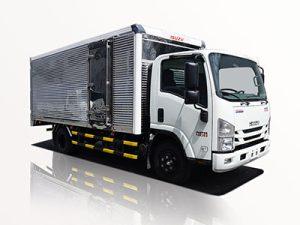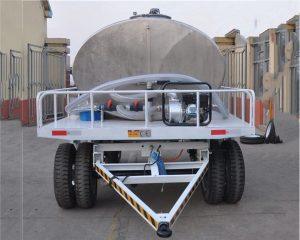Monday to Saturday - 8:00 -17:30
Are Semi Trucks All Wheel Drive? A Comprehensive Guide
Introduction
When it comes to heavy-duty vehicles, semi trucks play a crucial role in transporting goods across long distances. One question that often arises among truck drivers and enthusiasts alike is whether semi trucks are all-wheel drive (AWD). Understanding the drivetrain configurations of semi trucks can influence purchasing decisions, operational efficiency, and safety on various terrain. This article aims to explore the variations in semi truck drivetrains, provide insights into all-wheel drive systems, and offer practical tips and considerations for truck owners and operators.
Understanding Semi Truck Drivetrain Configurations
What Is Drivetrain?
The drivetrain of a vehicle consists of all the components that transfer power from the engine to the wheels. In semi trucks, this includes the engine, transmission, differentials, and axles.
Common Types of Drivetrain in Semi Trucks
Semi trucks typically feature two main types of drivetrains:
- Rear-Wheel Drive (RWD): The most common configuration, where power is sent to the rear wheels.
- All-Wheel Drive (AWD): A system that distributes power to all four wheels, providing better traction.
Are Semi Trucks All-Wheel Drive?
While some vehicles, especially off-road models, are equipped with all-wheel drive, semi trucks are primarily designed for efficiency and stability on paved surfaces. Most semi trucks are rear-wheel drive (RWD). However, there are specialized all-wheel drive models available, particularly for specific applications and terrains.
Advantages of All-Wheel Drive in Semi Trucks
Enhanced Traction
All-wheel drive systems can significantly improve traction, especially on slippery or uneven surfaces. This feature is essential for trucks operating in snow, mud, or off-road conditions. It allows the vehicle to maintain better control, reducing the risk of losing grip during inclement weather.
Improved Stability
AWD systems provide better stability and handling by distributing power to all wheels. This can enhance driving confidence, particularly in challenging situations like tight turns or sudden stops.
Increased Load Capacity
All-wheel drive semi trucks can also support greater loads in challenging conditions, enhancing their ability to transport heavy goods safely and efficiently.
Disadvantages of All-Wheel Drive in Semi Trucks
Higher Cost
AWD semi trucks are generally more expensive compared to their RWD counterparts. This higher cost can be a significant factor for fleet operators and owner-operators deciding on vehicle investments.
Increased Maintenance
The complexity of all-wheel drive systems can lead to higher maintenance costs. Regular checks and servicing are necessary to ensure the system operates efficiently.
Fuel Efficiency
All-wheel drive systems may slightly impact fuel efficiency compared to RWD trucks. The added weight and complexity of AWD can lead to reduced MPG (miles per gallon), which is a critical consideration for long-haul operators.
Examples of All-Wheel Drive Semi Trucks
Specialized Models
While not common, several manufacturers offer all-wheel drive options for their semi trucks. Some of these models include:
- Freightliner Business Class M2 106: This truck is available with an all-wheel drive option, making it suitable for work in snow and rugged conditions.
- Kenworth T370: Another heavy-duty option with AWD, ideal for vocational applications where off-road performance is crucial.
- Peterbilt 337: This model offers optional all-wheel drive, providing versatility for various terrains.
Factors to Consider When Choosing All-Wheel Drive
Operational Needs
Consider the specific needs of your business. If you operate primarily on highways, a rear-wheel drive truck may sufficiently meet your requirements. However, if your routes frequently include off-road or challenging terrain, an all-wheel drive option may offer significant advantages.
Budget Constraints
Evaluate the total cost of ownership, including purchase price, fuel efficiency, and maintenance. Be sure to balance the upfront costs with the potential operational benefits of an AWD system.
Climate Conditions
The geographical location and environmental conditions where the truck will operate can significantly influence the decision. Areas with heavy snowfall, rain, or unpaved roads may necessitate all-wheel drive trucks to ensure safety and efficiency.
Maintaining All-Wheel Drive Trucks
Regular Inspections
Always perform routine inspections of the drivetrain components, including the transfer case, driveshafts, and differentials, to ensure they are functioning properly.
Fluids and Filters
Keep the AWD system’s fluids clean and at the correct levels, and promptly replace filters as needed to maintain optimal performance.
Tire Maintenance
Tire condition is crucial for all-wheel drive performance. Ensure that all tires are regularly checked for wear and pressure, as imbalances can negatively affect handling and traction.
The Future of All-Wheel Drive in Semi Trucks
As technology advances, manufacturers continue to innovate, creating more efficient and effective drivetrain systems. With increasing demands for versatility and off-road capabilities, we can expect continued growth in the availability of all-wheel drive semi trucks. However, the traditional rear-wheel drive configuration will likely remain dominant in the industry due to its efficiency and lower operational costs.
FAQs About All-Wheel Drive Semi Trucks
1. Are all semi trucks all-wheel drive?
No, most semi trucks are rear-wheel drive. However, there are specialized all-wheel drive options available for certain models.
2. What are the primary benefits of an all-wheel drive semi truck?
The main advantages include improved traction, better stability, and increased load capacity, especially in challenging terrain.
3. Do all-wheel drive trucks require more maintenance?
Yes, all-wheel drive systems are generally more complex than rear-wheel drive systems, which can lead to higher maintenance costs.
4. Is all-wheel drive worth the extra cost?
This depends on your operational needs. If you frequently encounter challenging terrains, the benefits of AWD may justify the additional cost.
5. Can all-wheel drive improve fuel efficiency?
Generally, all-wheel drive systems can slightly reduce fuel efficiency compared to rear-wheel drive systems due to added weight and complexity.
6. What factors should I consider when choosing a semi truck drivetrain?
Consider your operational needs, budget constraints, climate conditions, and maintenance preferences when deciding between AWD and RWD.







